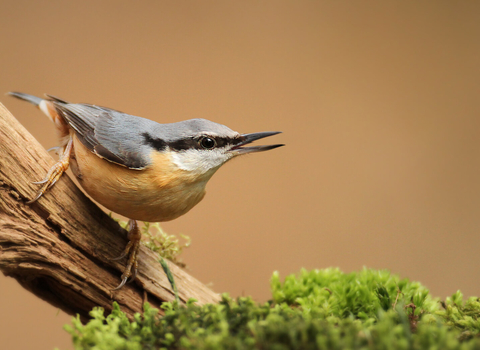
Ragged robin - Richard Burkmar
Prior’s Wood and Meadow, Three Crosses, Gower, Swansea
Important Update: The woodland paths in Prior’s Wood and Meadow are currently closed to the public. The ride at the bottom of the woods and meadow remain open.
Location
Know before you go
Dogs
When to visit
Opening times
Open access reserve.Best time to visit
Spring, summer and autumn.About the reserve
Prior’s Wood and Meadow comprises 12.1 hectares of secondary broadleaved woodland and 5.3 hectares of meadow including some evidence of old mine workings, small spinneys, and a considerable length of hedgerow.
The woodland canopy is made up of a considerable mixture of species including Sweet Chestnut, Beech, Ash, Alder, Birch, Sessile Oak, Yew, Elm, and Small-leaved Lime. This diversity, together with cartographic evidence which shows that the site was originally called ‘Prior’s Meadow’, suggests that the woods have arisen from natural regeneration, probably aided by Victorian planting.
A variety of interesting shrub species may be found, including Eared Willow, Creeping Willow, and Alder Buckthorn. The varied ground flora is complemented by a rich mixture of ferns, bryophytes, and lichens, including Royal Fern.
Much of the wood is very damp, with two springs arising within the reserve.
The meadow slopes gently in a south easterly direction and is somewhat drier than the woodland. The turf is made up of a wide range of typical meadow plants, such as Black Knapweed, Devil’s-bit Scabious, Ragged Robin, and Yellow Rattle together with a number of uncommon species such as Whorled Caraway. The meadow also contains a great variety of grasses and sedges, and more than 100 vascular plants have been recorded.

Ringlet butterfly {Aphantopus hyperantus} resting on yellow rattle, Ross Hoddinott/2020VISION



